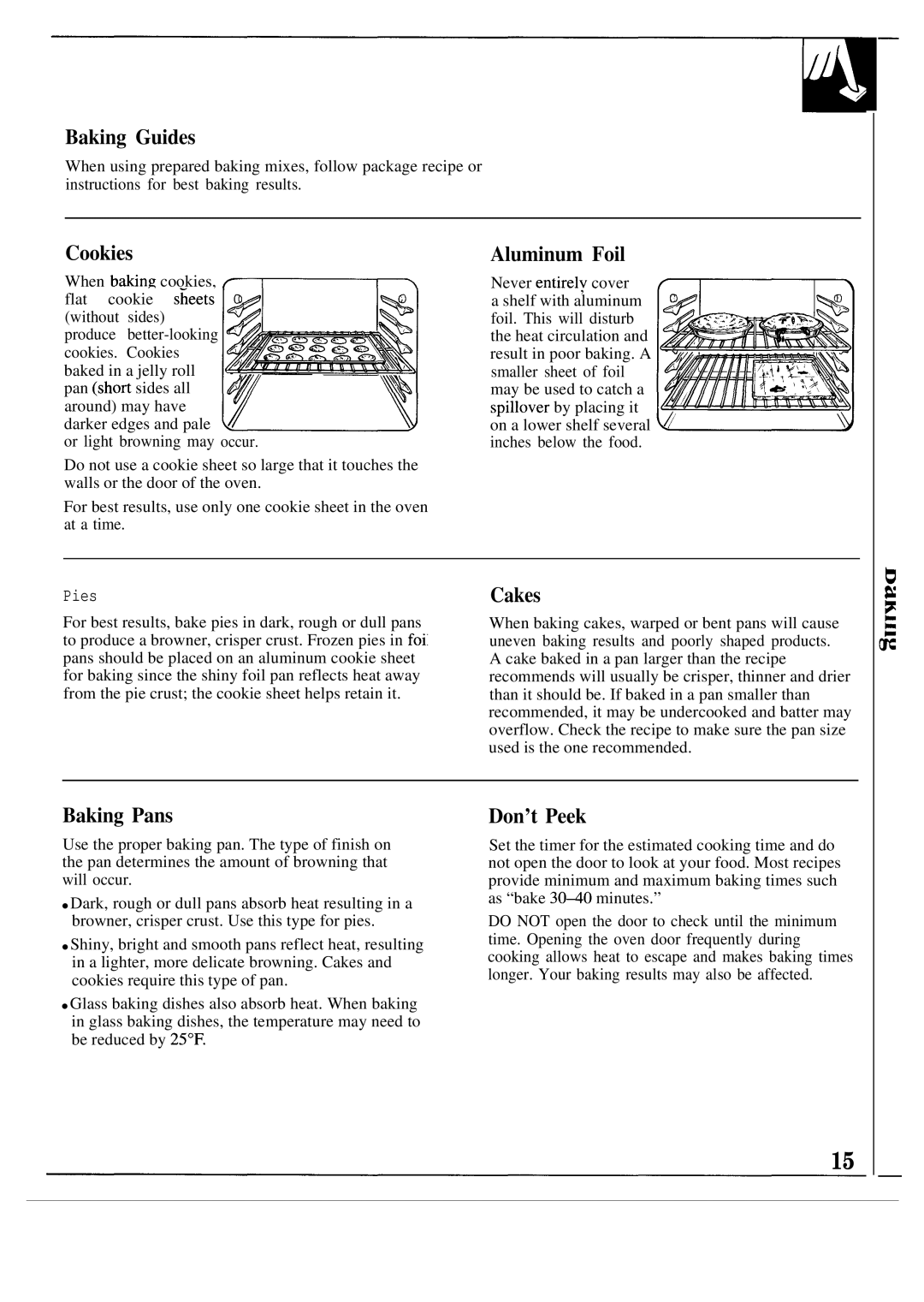JGBC16, JGBC15, JGBS06, JGBS16, JGBS72 specifications
The GE JGBS79, JGBS78, JGBS77, JGBS74, and JGBS72 are part of a series of advanced gas ranges manufactured by General Electric, designed to offer cutting-edge technology and exceptional cooking performance. These models are engineered for versatility and convenience in modern kitchens, boasting features that cater to both amateur cooks and culinary enthusiasts.The GE JGBS79 is a standout model that includes a spacious 5.0 cu. ft. oven capacity, allowing users to cook multiple dishes simultaneously. It features a powerful convection oven, which circulates hot air for even baking and roasting. Additionally, the JGBS79 is equipped with a self-cleaning function, making maintenance effortless. The range includes a robustEDGE-to-Edge cooktop that offers a combination of different burner sizes to accommodate various cooking needs, along with a special built-in griddle option designed for preparing breakfast favorites.
The JGBS78 shares a similar design but focuses more on ensuring enhanced cooking efficiency with an integrated air fry mode. This technology provides a healthier alternative to traditional frying, allowing users to achieve crispy textures without excess oil. The range also offers steam cleaning, making it easier to keep the oven clean without harsh chemicals.
The JGBS77 model emphasizes user convenience with Wi-Fi connectivity, enabling users to control oven functions remotely via their smartphones. This smart technology makes it possible to preheat the oven or adjust cooking settings from anywhere in the home, enriching the cooking experience immensely.
For those seeking a more budget-friendly option, the JGBS74 combines essential features with reliability. It retains the popular cooktop design and ensures impressive cooking performance while offering a reliable self-cleaning oven.
Lastly, the JGBS72 serves as an entry-level model but does not compromise on quality or functionality. It is designed with a classic look that fits seamlessly into any kitchen décor. Its simple interface makes it easy to operate, promoting a user-friendly experience for those new to cooking.
Each of these GE models combines modern design with innovative technology, making them ideal choices for anyone looking to enhance their culinary adventures. Their blend of style, functionality, and ease of use truly sets them apart in the competitive landscape of kitchen appliances.

